SysAid vs. Cherwell Service Management: Which is the right choice for your IT Service Management (ITSM) needs? With a variety of options available in the ITSM field, finding the perfect solution for your organization's specific needs can be a daunting task.
In this blog post, we aim to simplify your decision-making process by closely examining and comparing both service desk software platforms.
Furthermore, if neither of these options fully meets your organization's needs, we'll present you with an alternative: InvGate Service Management, a compelling option emphasizing exceptional user experience, robust ticketing and Incident Management capabilities, strong self-service functionalities, and cost-effectiveness.
Let's embark on this ITSM tools comparison, helping you discover the ideal solution that fits your organization's unique needs and sets you up for ITSM success.

Table of Contents
- TL;DR
- What is SysAid?
- What is Cherwell Service Management?
- Considering InvGate Service Management as an ITSM solution alternative
TL;DR
- SysAid is a cloud-based ITSM platform for mid-sized teams and established IT departments, offering a well-organized knowledge base, global customer support, and customization options. However, users complain about interface, support, system changes, and prices.
- Cherwell Service Management's interface and customization options are impressive, but users criticize its acquisition by Ivanti, citing challenges in achieving optimal performance when customizing the software.
- InvGate Service Management offers a robust ticketing system, intuitive user options, extensive reporting capabilities, and unparalleled cost-effectiveness in ITSM and ESM.
We tried to be as thorough as possible, but if you don't have enough time to read it through and through, here's (another) TL;DR: InvGate Service Management can do everything we say here, and you can test it right away for free for 30 days.
Most looked-at features by buyers
When evaluating IT Service Management solutions, potential buyers focus on specific features that align with their organization's requirements, making it crucial to understand these desired attributes for well-informed decisions.
Let's explore the key factors commonly considered by potential buyers when comparing ITSM tools.
- ITIL compliance - Many organizations prioritize solutions that support ITIL processes such as Incident Management, Problem Management, Change Management, and Asset Management, as adherence to ITIL best practices is a priority.
- Scalability - Solutions that can adapt to changing needs and accommodate customization are prioritized, allowing organizations to tailor the software to their unique business requirements.
- Optimized IT service catalog - Streamlined IT service catalogs are highly valued, providing a centralized platform for users to request specific IT services or resources, simplifying service requests and enhancing visibility.
- Comprehensive Ticket Management - The significance of a comprehensive Ticket Management System within the help desk software is highlighted by buyers. This feature facilitates effective tracking, assignment, and resolution of customer inquiries and support requests.
- Customization and flexibility - Buyers seek software solutions with customization options to align the platform with their business needs. This flexibility ensures the software adapts to their unique workflows and processes, enhancing user satisfaction and overall effectiveness.
- Self-service portal and knowledge base - A self-service portal empowering end-users to independently resolve common issues and find relevant information without direct assistance is highly valued by buyers.
- User-friendly experience - Buyers highly value ease of use and an intuitive interface that promotes user adoption and productivity. Mobile accessibility is particularly important for organizations with remote or mobile workforces.
- Pricing and support - Buyers take cost-effectiveness into account, including licensing models, subscription plans, and additional costs for features or users. The availability of reliable customer support, comprehensive documentation, and accessible training resources are also significant considerations.
- Efficient IT Asset Management - Users prioritize software with robust ITAM capabilities to maintain accurate inventories and optimize resource utilization within their organizations.
- Seamless integration capabilities - Integration with other systems and applications is critical for smooth data flow and process automation, enhancing efficiency and providing a unified user experience.
- Support automation and Workflow Management - Automation capabilities to optimize routine tasks such as ticket routing, approvals, and escalations, contributing to increased efficiency and productivity.
- Insightful reporting - Buyers look for help desk software with powerful reporting tools like dashboards and reports, providing valuable insights into their IT operations and performance for informed decision-making and continuous service improvement.
What is SysAid?
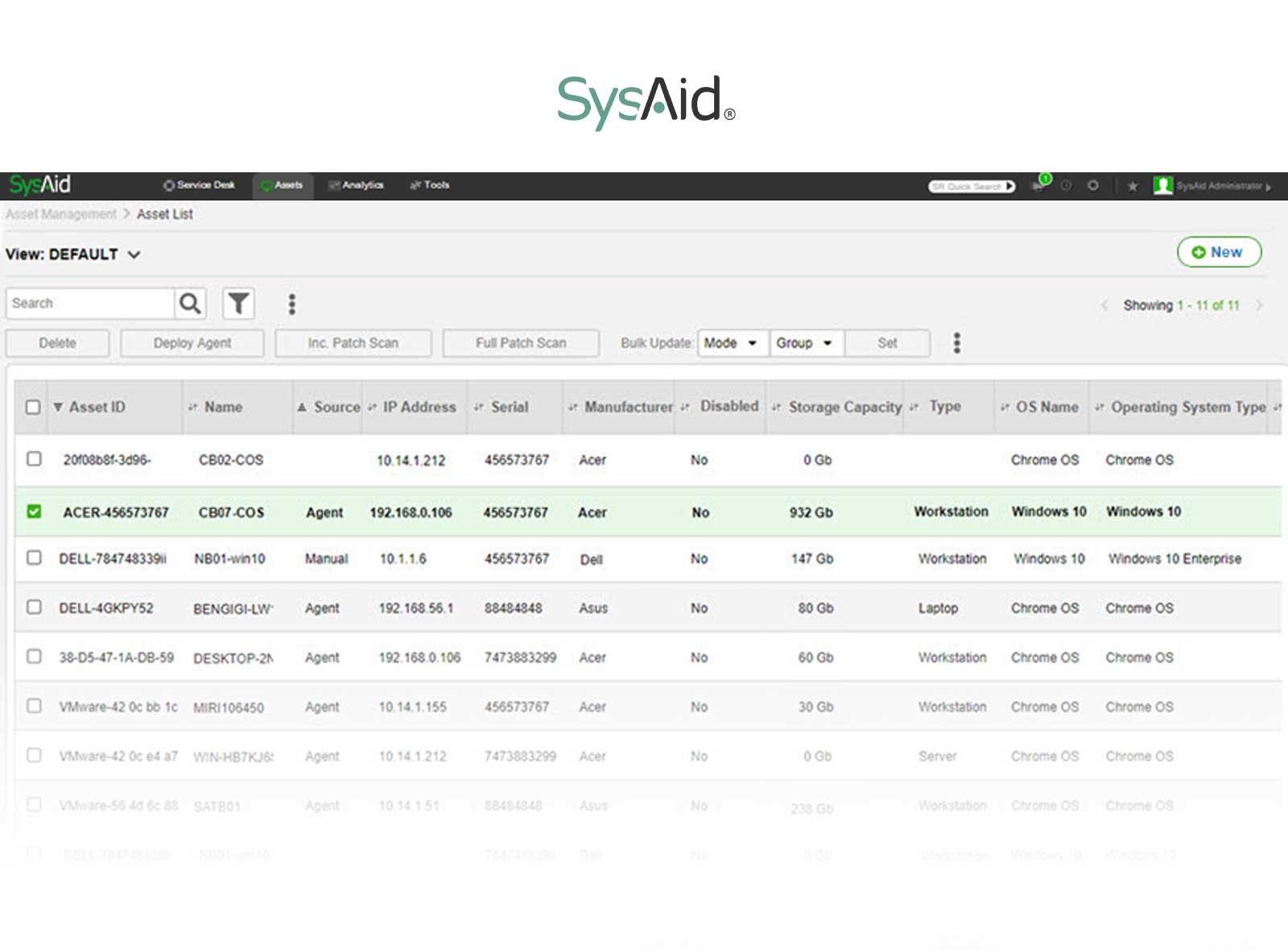
SysAid, developed by SysAid Technologies Ltd., is a cloud-based IT Service Management platform aimed at empowering mid-sized teams and mature IT departments. It offers advanced capabilities to efficiently manage service desk operations, with a primary focus on automation, user experience enhancement, and comprehensive functionality. This allows IT professionals to streamline workflows, boost productivity, and prioritize essential tasks, leading to enhanced business success.
Founded in 2002 and headquartered in Toronto, Canada, SysAid Technologies Ltd. is an ITSM company comprising a skilled team of more than 100 professionals. Their expertise lies in delivering effective solutions for IT Incident Management, problem-solving, Change Management, and service requests. Their overarching mission revolves around assisting organizations in optimizing their IT operations and achieving greater overall efficiency.
What users like from SysAid
SysAid has received positive user feedback, as evident from Gartner reviews. Let's explore the advantages highlighted by these users.
- Global customer support - The platform goes beyond borders to offer support on a global scale, adopting a customer-centric approach by actively seeking and incorporating user feedback.
- User-friendly interface - SysAid has an intuitive and user-friendly interface, enabling users to navigate effortlessly and fully utilize the software's capabilities.
- Knowledge base organization - The tool’s knowledge base is thoughtfully designed, promoting improved organization and easy accessibility to information.
- Responsive GUI - The Graphic User Interface (GUI) promptly addresses issues, ensuring a seamless and efficient user experience.
- Customization options - Users highly value SysAid's extensive array of customization choices, which empower them to tailor the software to their specific needs and preferences. This includes the ability to incorporate knowledge base articles, fostering knowledge sharing within the organization.
- SSO and AD integration - By integrating Single Sign-On (SSO) and Active Directory (AD), the software simplifies user authentication and access management, enhancing both security and user convenience.
- Reporting capabilities - SysAid includes robust reporting features that offer comprehensive insights into ticket performance. This empowers users to make data-driven decisions and optimize their service desk operations.
- Email integration - SysAid seamlessly integrates with email, facilitating effective communication with end users and encouraging collaboration for efficient issue resolution.
What users don’t like from SysAid
SysAid IT Service Management, while having its strengths, has encountered customer criticism, as evidenced by reputable sources like Gartner. Let's delve into some of the concerns raised by users.
- Limited customization options in specific areas - Certain users feel restricted by the lack of extensive customization choices in specific areas of the software. This limitation curtails their ability to tailor SysAid according to their unique requirements and preferences.
- Difficulty in configuring settings without disrupting existing setups - Users have found it challenging to modify settings without inadvertently causing disruptions to other configurations. This complexity in the system setup and administration process leads to difficulties and disturbances.
- Incomplete features - Specific features like the Configuration Management Database (CMDB) and license tracking are reported to be incomplete or not fully functional, falling short of user expectations and hindering optimal IT management practices.
- Limitations on administrators and reporting options - The software imposes restrictions on the number of administrators allowed, which can be limiting for organizations with larger teams. Furthermore, the lack of comprehensive reporting options hampers users' ability to gather and analyze data effectively.
- Slow support response and challenging system change - Users report experiencing delayed response times from the support team, leading to prolonged issue resolution. Additionally, system changes are described as frustrating and cumbersome, resulting in a negative user experience.
- Challenges with ticket updates and landing page customization - Users encounter difficulties when updating tickets, leading to inefficiencies in the workflow. Similarly, customizing the landing/login page proves to be challenging, impeding desired branding and personalization efforts.
- Integration and AI/Automation limitations - Users are dissatisfied with SysAid's limited integration capabilities, which make it challenging to seamlessly integrate with other systems. Moreover, the absence of advanced AI capabilities and automation features hampers efficiency and productivity gains.
- Pricing concerns - Some users express dissatisfaction with SysAid's pricing, deeming it unreasonably high.
- Outdated and inconsistent user interface - The user interface receives criticism for being outdated and inconsistent, exhibiting varying styles within the same product. This inconsistency undermines the user experience and creates difficulties regarding ease of use.
What’s SysAid’s argument over Cherwell Service Management?
SysAid contends that it holds a competitive edge over Cherwell Service Management by excelling in several key areas that cater to the diverse needs of its users. While both platforms have received positive user feedback from reputable sources like Gartner, SysAid highlights the following advantages to distinguish itself.
- Global customer support - SysAid borders to offer global customer support. It adopts a customer-centric approach by actively seeking and incorporating user feedback, ensuring that users worldwide receive the attention and assistance they need.
- Knowledge base organization - SysAid takes pride in its thoughtfully designed knowledge base, which promotes improved organization and easy accessibility to information. Users can quickly access valuable knowledge base articles, enhancing their problem-solving capabilities and fostering knowledge sharing within their organizations.
- Responsive GUI - The Graphic User Interface of SysAid is highly responsive, promptly addressing issues and providing a seamless and efficient user experience. This responsiveness contributes to improved productivity and user satisfaction.
- SSO and AD integration - Cherwell may offer customization options, but SysAid emphasizes its streamlined integration of Single Sign-On and Active Directory for user authentication and access management. This integration enhances both security and user convenience, making it easier for organizations to manage their user identities.
- Reporting capabilities - SysAid takes pride in its robust reporting features, which provide comprehensive insights into ticket performance. Users can make data-driven decisions and optimize their service desk operations, enabling them to provide efficient and effective support to their customers.
- Email integration - While Cherwell also integrates with email, SysAid emphasizes the effectiveness of its email integration, which facilitates seamless communication with end users and encourages collaboration for efficient issue resolution. This streamlined communication process contributes to faster problem resolution and improved customer satisfaction.
What is Cherwell Service Management?
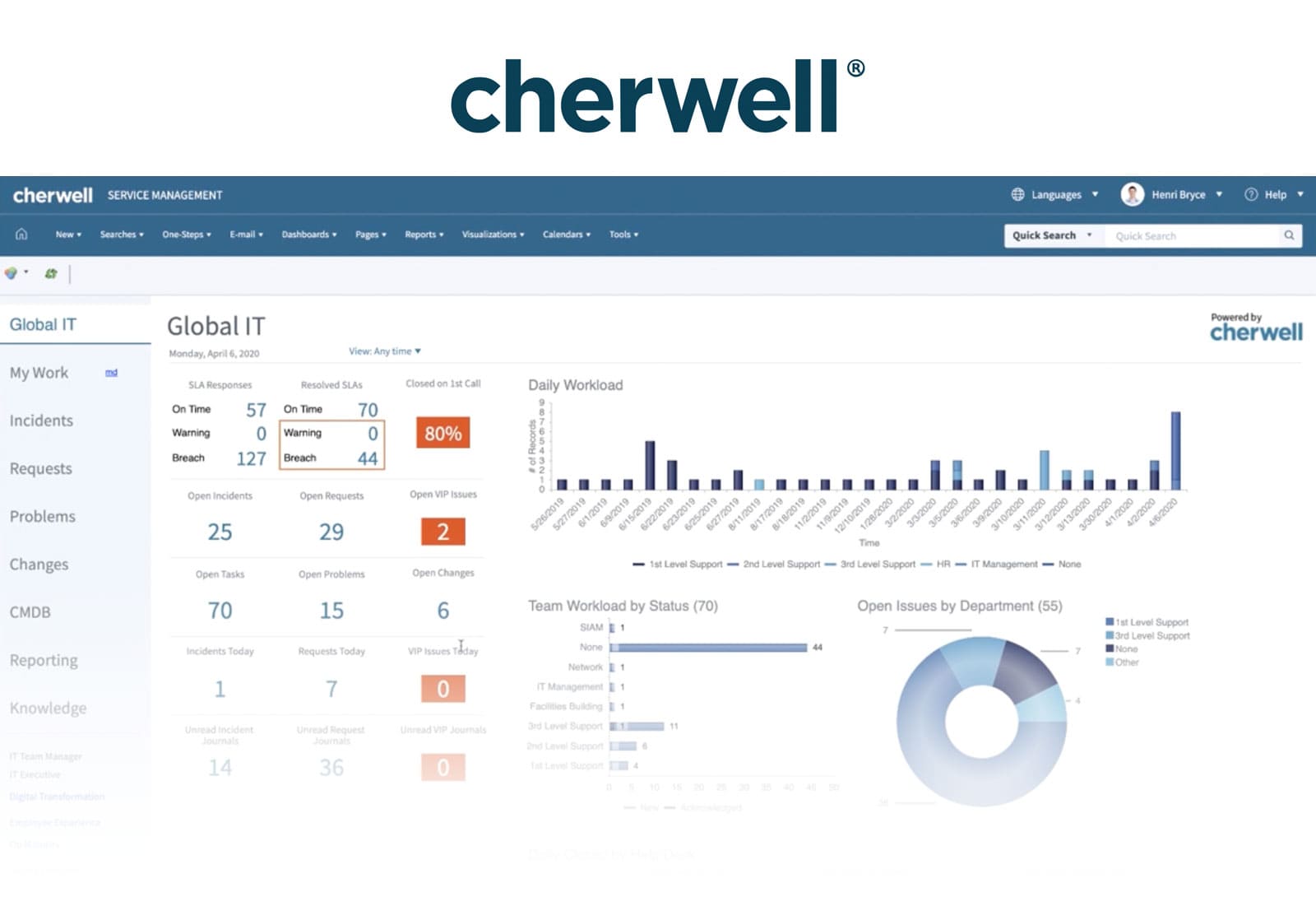
Cherwell Service Management, developed by Ivanti, is an IT Service Management platform that effectively caters to the requirements of service departments without the need for coding or scripting. What sets it apart is its ability to provide automated IT service delivery through an extensive range of pre-built tools.
One of the key highlights of Cherwell Service Management is its codeless architecture, which enables businesses to be more agile. Additionally, it offers a user-friendly drag-and-drop functionality for easy customization and utilizes automated workflows to eliminate time-consuming manual processes.
Furthermore, Cherwell Service Management is designed to be inclusive, supporting multiple languages. It can be deployed either as a Software-as-a-Service (SaaS) solution or through on-premise deployment. It seamlessly integrates with Ivanti Neurons, another platform with predictive, self-healing, and autonomous remediation capabilities, thereby enhancing overall system performance and security.
What users like from Cherwell Service Management
Cherwell Service Management has garnered favorable reviews from customers and reputable sources like Gartner. The mentioned advantages include.
- Intuitive user interface - The platform offers an intuitive and user-friendly interface, aimed at enhancing usability and promoting efficient interactions with the system.
- Simplified development - Cherwell's approach of employing low-code/no-code techniques enables users to swiftly introduce and implement new features without extensive coding knowledge or expertise.
- Seamless API integrations - Cherwell Service Management's support for API integrations ensures smooth connectivity with other systems, enhancing its overall functionality.
- Streamlined automation and Workflow Management - The tool stands out in its ability to handle automation effectively, empowering users to design and execute complex workflows to meet their unique requirements.
- Extensive customizability - Users highly appreciate the broad range of customization options available, allowing them to tailor various aspects of the system, such as form fields and workflows, to suit their specific needs.
What users don’t like from Cherwell Service Management
Despite its strengths and positive attributes, Cherwell Service Management has received feedback from customers expressing their concerns and dislikes about specific aspects of the platform. The following dislikes have been mentioned in feedback from reputable sources, such as Gartner.
- Pushy sales approach - Following Ivanti's acquisition of Cherwell Software, customers have expressed dissatisfaction with the aggressive sales push towards Ivanti Neurons, an alternative platform. This sudden shift in focus has not been well-received by Cherwell's existing customer base, leading to feelings of dissatisfaction among them.
- Upgrade issues and bugs - Users have reported experiencing bugs and challenges during platform upgrades. Some releases have been poorly planned, resulting in issues that require resolution and negatively impacting the overall user experience.
- Performance challenges - Some users have encountered performance issues, particularly when dealing with large databases or extensive groups of technicians. These problems can impact the system's responsiveness, causing frustration for users.
- Customization complexity - While Cherwell offers extensive customizability, certain users have found some development and customization tasks to be intricate and time-consuming, particularly when creating new Business Objects and Forms.
- Customer support - The level of customer support provided has faced criticism from some users. Complaints include slow response times and perceived reluctance to acknowledge software behavior as bugs, leading to frustration and dissatisfaction with the support services.
- Outdated user interface - Certain users have expressed dissatisfaction with the graphical user interface (GUI) of Cherwell, considering it to be outdated and less responsive, particularly when comparing the web version to the desktop application. This disparity in user interface quality has been a point of contention for some users.
What’s Cherwell Service Management’s argument over SysAid?
Cherwell Service Management presents itself as a strong competitor to SysAid, offering unique strengths that set it apart in the IT Service Management space. While acknowledging SysAid's positive attributes, Cherwell makes the case for its own advantages.
- Intuitive user interface - Cherwell has an intuitive and user-friendly interface, prioritizing usability and efficient interactions with the system. Users can easily navigate the platform, fostering a positive user experience and reducing the learning curve.
- Simplified Development: Cherwell's low-code/no-code approach is a standout feature, enabling users to introduce and implement new features swiftly without requiring extensive coding knowledge or expertise. This empowers organizations to be more agile and responsive to changing business needs.
- Seamless API integrations - Cherwell emphasizes its support for API integrations, ensuring smooth connectivity with other systems to enhance overall functionality. This capability allows organizations to integrate Cherwell with their existing tools and systems seamlessly, promoting a more integrated and efficient IT ecosystem.
- Streamlined automation and Workflow Management - Cherwell excels in handling automation effectively, empowering users to design and execute complex workflows that cater to their specific requirements. This efficiency reduces manual efforts and streamlines processes, leading to improved productivity.
- Extensive customizability - Cherwell offers extensive customization options, enabling users to tailor various aspects of the system to suit their specific needs and preferences. From form fields to workflows, users can configure the platform according to their unique workflows and processes.
Considering InvGate Service Management as an ITSM solution alternative
While SysAid and Cherwell Service Management are well-known competitors in the ITSM industry, it is crucial to explore alternative solutions that align closely with the specific needs of your organization. In this regard, InvGate Service Management emerges as a compelling and worthy choice that deserves careful consideration.
Let's delve into the beneficial features of InvGate Service Management, which make it an invaluable and suitable option for fulfilling your ITSM requirements.
Powerful Ticketing and Incident Management
InvGate Service Management excels in providing robust features for ticketing and incident management. It facilitates efficient tracking, collaboration, and resolution of tickets, empowering IT teams to handle and prioritize incidents effectively. Features like automated ticket routing, customizable workflows, and SLA Management enhance the efficiency of incident resolution processes.
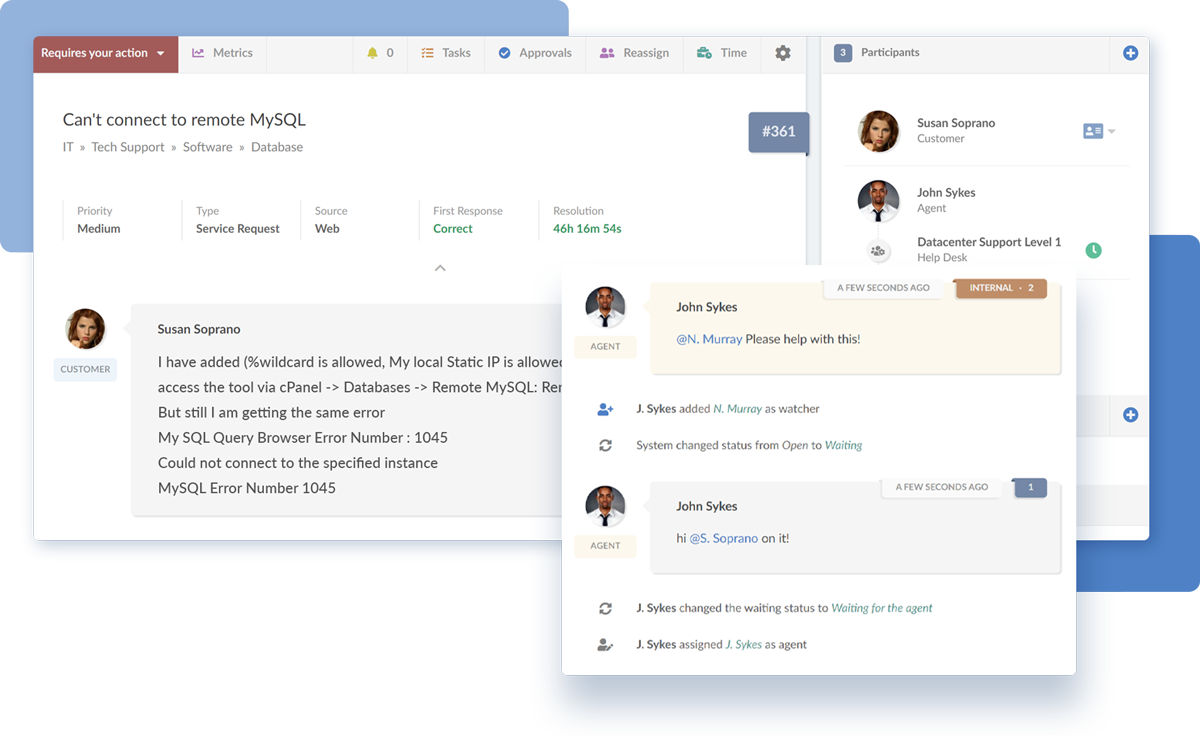
Simplified setup and configuration
InvGate Service Management simplifies the setup and configuration process using a no-code/low-code approach, making it easy to implement the system and enabling users with varying technical expertise to adopt it effortlessly. The platform offers straightforward configuration options that effectively harness its robust ITSM capabilities.
Outstanding user experience
A paramount focus for InvGate Service Management is delivering an exceptional user experience, achieved through meticulous design and adherence to UI/UX best practices. Its intuitive interface promotes quick adoption and reduces the need for extensive training, ensuring a user-friendly design that maximizes productivity.
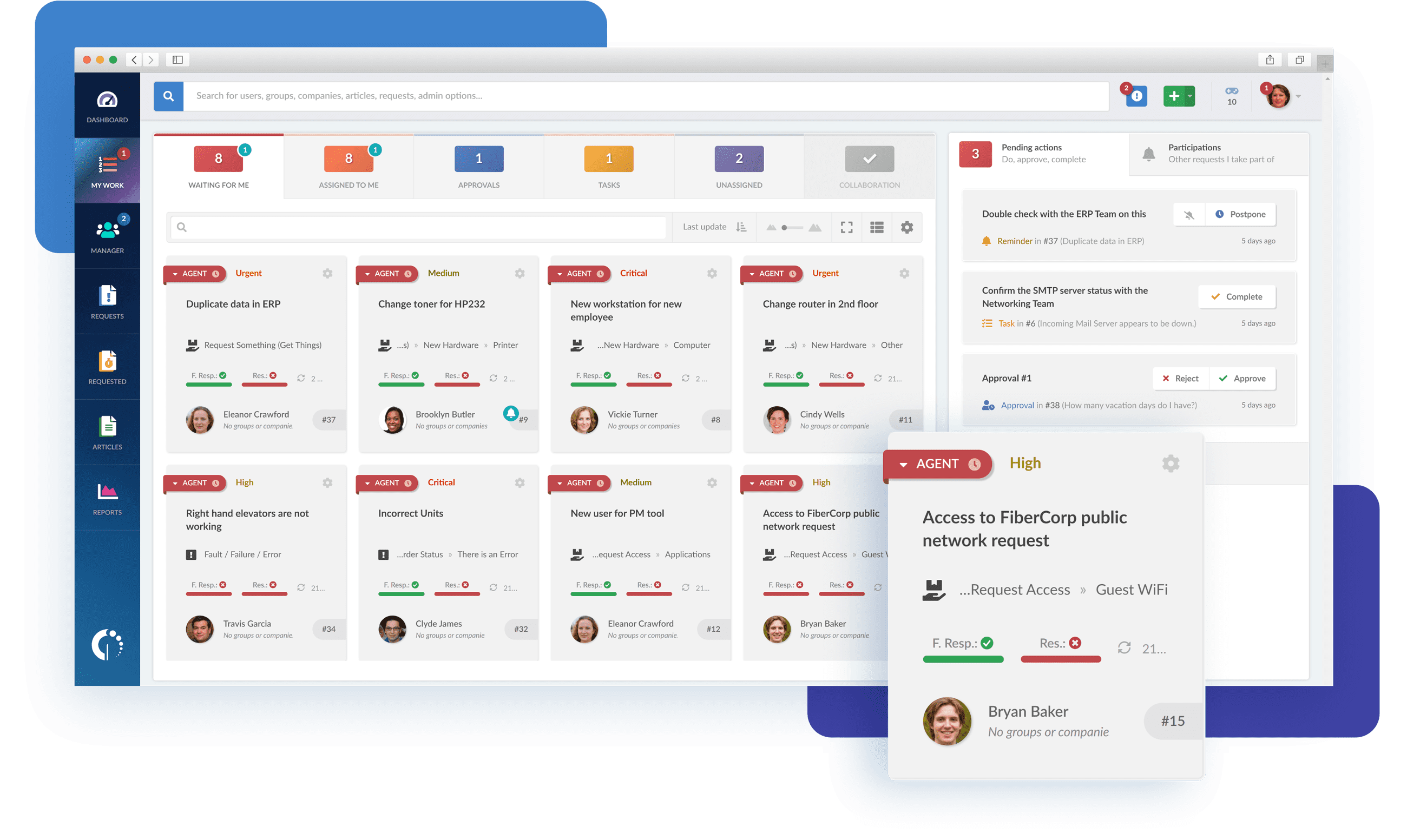
Robust self-service capabilities
InvGate Service Management empowers end-users with robust self-service capabilities. It offers a user-friendly portal, an extensive IT service catalog, and a knowledge base, enabling users to independently resolve common issues, access IT services, and utilize self-help resources. This significantly reduces the burden on IT staff.
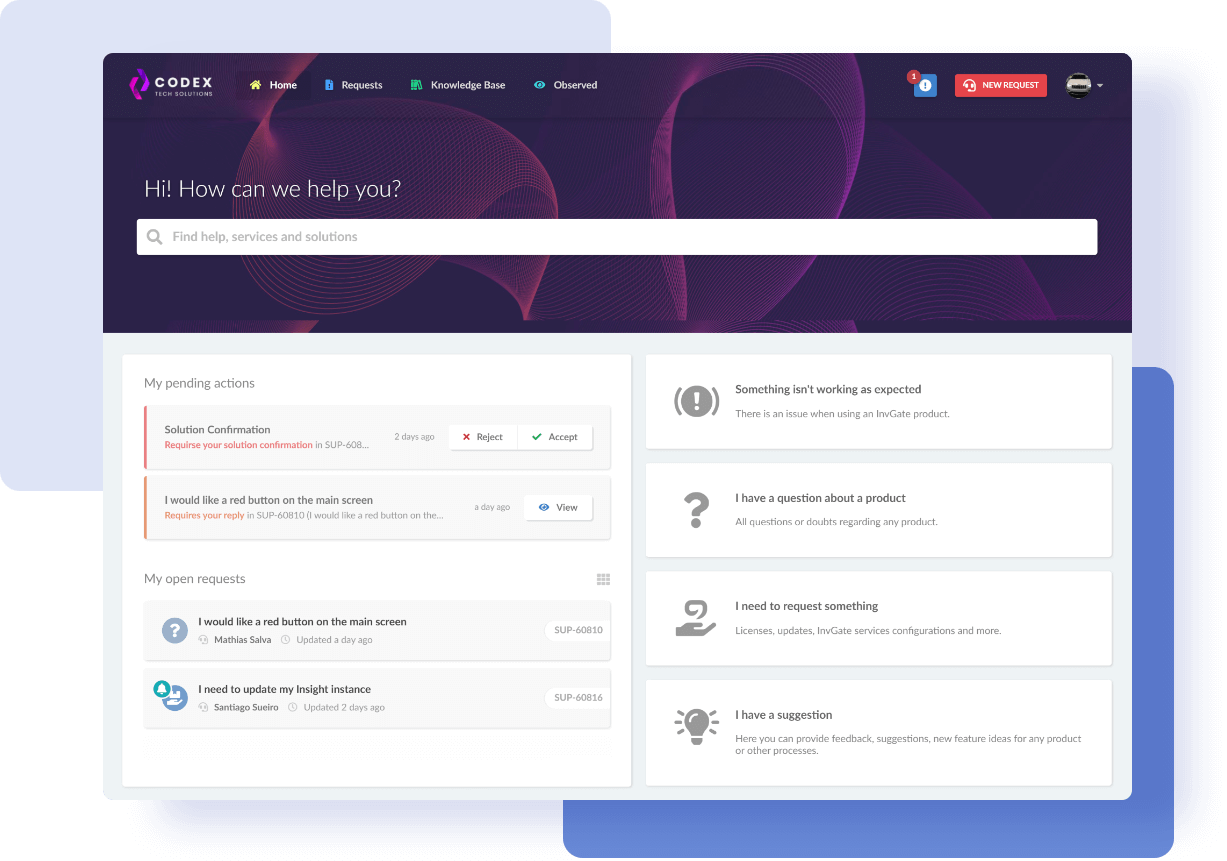
Cost-effective solution
InvGate Service Management provides a cost-effective solution without compromising on functionality. It presents a comprehensive array of ITSM features at a competitive price, making it an attractive choice for organizations seeking affordability without sacrificing capabilities. When compared to alternatives like SysAid and Cherwell Service Management, InvGate Service Management strikes an optimal balance between cost and functionality.
Customization and flexibility
InvGate Service Management offers flexibility in deployment options, allowing organizations to choose between on-premise or cloud-based solutions. This adaptability ensures the platform can cater to the specific requirements of different sectors and industries.
ITIL best practice compliance
InvGate Service Management has earned the prestigious PinkVERIFIED Certified certification,
underscoring its dedication to maintaining ITSM excellence. Whether organizations are starting their ITIL journey or managing intricate operations, InvGate Service Management provides a user-friendly and feature-rich experience aligned with industry best practices.
Designed for ITSM and ESM
InvGate Service Management is purpose-built for ITSM while seamlessly extending its capabilities to Enterprise Service Management (ESM). This empowers operational departments to improve their processes and fully embrace the benefits of digital transformation, promoting streamlined workflows and comprehensive digital initiatives across all departments.
Comprehensive Asset Management
Through integration with InvGate Asset Management, InvGate Service Management offers comprehensive asset management capabilities. Organizations gain a holistic view of their IT ecosystem, leading to improved service delivery and reduced downtime. InvGate Asset Management includes features such as IT Asset Discovery, Inventory Management, Software License Management, and maintenance schedules.

Comprehensive reporting and analytics
InvGate Service Management provides comprehensive reporting and analytics functionalities, offering valuable insights into IT operations and performance. The platform includes ready-to-use reports and customizable dashboards, enabling IT teams to analyze data, identify patterns, and make informed decisions to enhance their services.
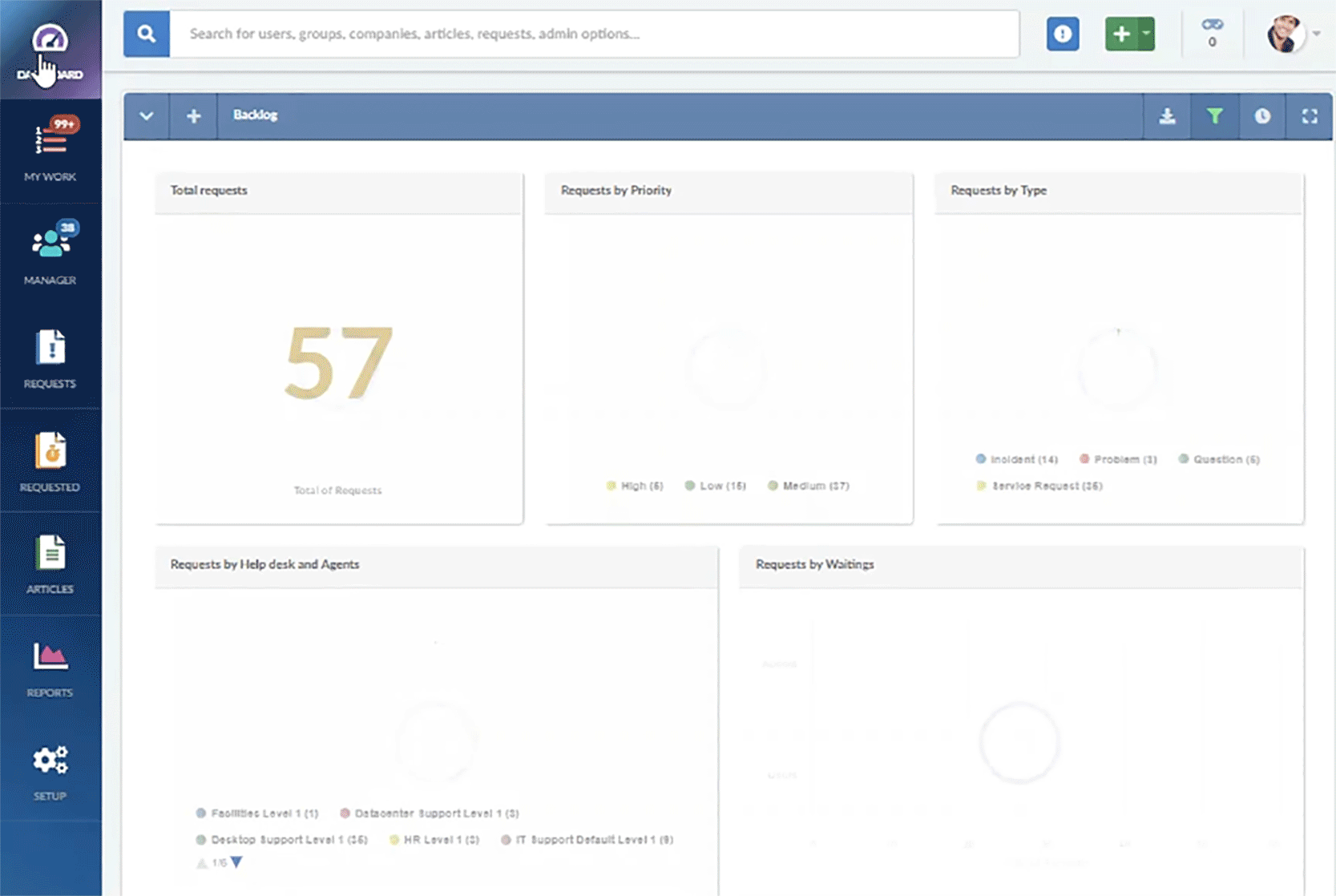
Fast ROI and ongoing innovation
InvGate Service Management ensures a swift return on investment through efficient implementation processes. Within weeks, organizations can begin experiencing the benefits of this robust ITSM solution. Furthermore, regular feature updates keep users at the forefront of technology without incurring additional costs.
Next steps
In the SysAid vs. Cherwell Service Management battle, both platforms have demonstrated their unique advantages and strengths in the IT Service Management arena.
As organizations weigh their options between these two solutions, it's important to explore other alternatives that may better meet specific needs and priorities. One such contender is InvGate Service Management, a compelling choice offering an exceptional user experience, robust ticketing and Incident Management capabilities, strong self-service functionalities, and cost-effectiveness.
Evaluating all available options is crucial for optimizing ITSM operations and finding the best fit for your organization's requirements. For further support in implementing an effective ITSM solution, our free ITSM implementation checklist is available for download. This comprehensive resource will guide you through the necessary steps to devise a successful implementation strategy, ensuring a seamless transition and maximizing the benefits of your chosen ITSM platform.
















